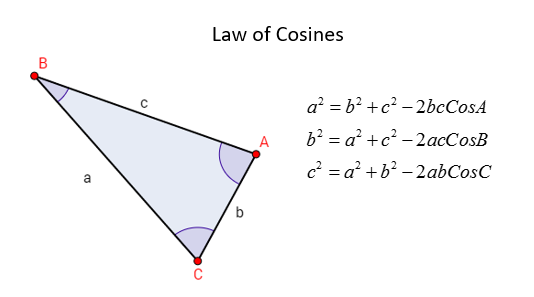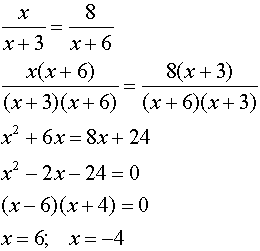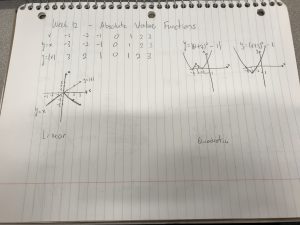- Finding infinite geometric series values – The most interesting topic that I have learned so far doing math! This shows us the formula to finding the sum of endless series of numbers. It is just mind-blowing how humanity came up with a formula that helps us to find the sum of infinite series of numbers. I just can’t wait to do Pre-Calc 12 and Calc 12, which would have even interesting, and expanded formulas than those in Pre-Calc 11.
- Analyzing Quadratics – This is a topic where we have to find vertex, the domain, the range, and visualize what the whole graph’s going to turn out to be by solving quadratics. I find this very useful and realized that this will be helpful when improving visualizing skills.
- Solving Quadratics – This topic expands the factoring skill that we learned during Grade 10, and it is the most useful skills that helped me throughout the semester. Learning how to factor helped me solve problems faster, and easier. It not only helped me in Pre-Calc 11 class but in my Physics class. It also helped me think better and choose wisely as in this topic, there is not only one but many forms of factoring formulas.
- Solving rational equations – Calculation errors always have been a thing to me whenever it comes to test days. However, this topic taught me again to be careful with subtractions and additions. By far the most complicated topic and only topic that made me anxious on test days due to a possibility of calculation errors.
- Sine and Cosine law – This topic was new to me and never thought that I would encounter a topic where we dealt with non-right triangles. Dealing with angles, and dimensionally can always be useful in life, and in the future where one dreams of going into space engineering.
Category Archives: Grade 11
Blackout Poem – “Death of a Salesman”
Don’t come back
Pushes back
awful form
then fall on the floor
start rolling around
furious and humiliated
I picture
hollow, empty
I fight them
in my frustration
“Death of a Salesman” is a tragic play written by Arthur Miller based on 1950s America. Willy Loman, a salesman who is married to Linda and has two sons, Biff, and Happy, returns home from a failed sales trip most of the nights. He always believed in American dream where people gets success from their hard work. However, in spite of working hard day and night, he has to borrow money from Charlie, his neighbor, for insurance, fridge, house mortgage, and car. He believes he could be successful just like Ben but never turned out to be one and decides to commit suicide for the insurance money, which is a lot more than what he brings home. He sees this as a chance for his family to be rich and prosperous again. He is a symbol of a depression, lost, and miserable man. He even cheats on his wife, who cares about him the most. He does not notice that he has a developing Alzheimer. All of Willy Loman’s behaviors, the flow of the play shows this as a tragedy.
My blackout poem describes how Willy Loman tries to be successful but always gets pushed back, and falls to the bottom, which gets repeated. His lacking of money, him getting no respect from others, and getting humiliated from Howard, frustrates him, which also leaves him empty when returning home. My illustration shows Willy Loman looking up the night sky, looking at the stars, hoping that someday his perseverance leads him to reach those stars.
Week 17 – Trigonometry
In this week, we expanded our knowledge of Grade 10 trig. We started off by reviewing Grade 10 trig last week. We went through the formula SOH CAH TOA to remind us about the topic we learned. This week, we learned how to find the length and the angle of a special triangle that isn’t 90 degrees like the ones that we did when we were Grade 10. We learned about the reference angle, the quadrants where the angles located the negative and the positive sides of a triangle , finding the angle and the length with Sine law, and Cosine Law.
Reference angle

Sine Law

Cosine Law

Week 16 – Reviewing Trigonometry from Grade 10
This week, we have went through and reviewed Trigonometry from Grade 10. We learnt that the triangle equals 180 degrees, and the angle changes where the adjacent, and the opposite length will be for that triangle with that angle. This week was a reminder for all of to get us ready for Grade 11 pre-calculus trigonometry where we will be using Sine Law and Cosine Law to find the angle and the lengths of the triangle.
In Grade 10, we learned the formula SOH CAH TOA
SOH means when there is the opposite length and the hypotenuse, we will be using Sine.
Sine X degree = Opposite/Hypotenuse
CAH means when there is the adjacent length and the hypotenuse, we will be using Cosine.
Cosine X degree = Adjacent/Hypotenuse
TOA means when there is the opposite length and the adjacent, we will be using Tangent.
Tangent X degree = Opposite/Adjacent
DOAS – Monologue
The following shows my understanding of the monologue.
Willy: I have been depressed and have instability in my emotions which have lead me to cheat on my dear wife. My mind and my body is dying as the time goes which I want it to be ended quickly. My love for cars, love for my family and friends are just an excuse that keeps me alive. Other than that, there is no point of living as a salesman, travelling from cities to cities. People does not recognizes me anymore, no one respects me, not even Howard, whom and which I have dedicated.
I believe this is a monologue as his talking to someone about his depression, his describing his life, and his speech is uninterrupted.
This would fit in the situation when his having a talk about his issues and trying to fix it.
Week 15 – Solving Rational Equations
This week, we have learned about solving rational equations.
First of all the most important part when solving multiple rational equations is to see whether the denominator’s the same.
For example, lets look at this equation.

We can see that to make the equation the same on both sides, (x+6) was multiplied on the left side and (x+3) was multiplied on the right side.
Then, to make sure we have one equation, 8x+24 was moved to the left side and we could see that there is a common of Xs’.
We’ve calculated 6x-8x (-8x is when 8x was moved to the left) and got the result as shown above.
At last, we factored the equation having 2 Xs’
X=6, X=-4
Wave Phenomena Part 1 – Wave Interferance
Constructive Interferance
Constructive Interferance occurs when waves come together so that they are in the same point with each other. This means that their movement at a given point are in the same direction, due to the result of the amplitude at that point being much larger than the amplitude of an individual wave. As the waves meet, the amplitude between wave to the crest becomes much larger. For two waves of equal amplitude interfering together, the resulting amplitude is twice as large as the amplitude of an individual wave. After the collision, the wave came back to the original point. In conclusion, due to the constructive interferance, we were able to find a significant increase in amplitude.
Destrictive Interference
When two waves interfere together, they have the same amplitude in opposite directions, But then, there are more than two waves interfering. The situation gets a little more complicated. When the two waves meet in this following example, the collide and go apart as crests and troughs. When the two amplitude have opposite signs, they will also form a wave with a lower amplitude. The following diagram shows two pulses interfering destructively. Again, they move away from the point where they combine as if they never met each other.
Step 5
When we try to listen to music on an airplane, problem might occur. Headphones that block out the noise and let you enjoy to your music are called noise cancelling headphones. The shape of the headphones and the material they are made of can physically block certain sound waves from reaching your ears. As we learned in this lesson, if the soundwave is 180 degrees, it means that the wavelenght is zero, which result in silence.
Week 14 – Rational Expressions and Equations
This week, we learned about rationalizing expressions and equations; linear or quadratic.
We learned that denominator can’t be 0 and because of that there is restrictions, which is also called non-permissible values.
If we look at this expression

We know that x can’t be either 0 or 5 and when we factor both sides, we can see that there is a common of x-5. So, it gets canceled.
This chapter needs alot of practice with factoring.
Week 13 – Graphing Reciprocals of Linear and Quadratic Functions
Week 12 – Absolute Value Functions
Absolute Value is a magnitude of real number without regarding to its signs.
The absolute value has the form of y = |f(x)|, where f(x) is a function.
The x-intercept of the graph of y = f(x) is a critical point also known as point of reflection.
So when there is an absolute value symbol, the line always reflects.
As long as we know the concept of an Absolute Value, it is easy to solve problem solving questions.



